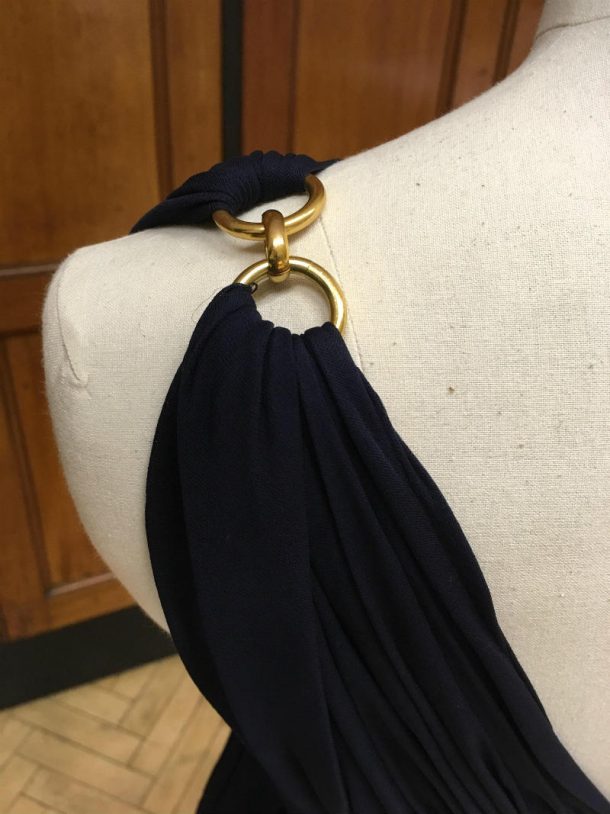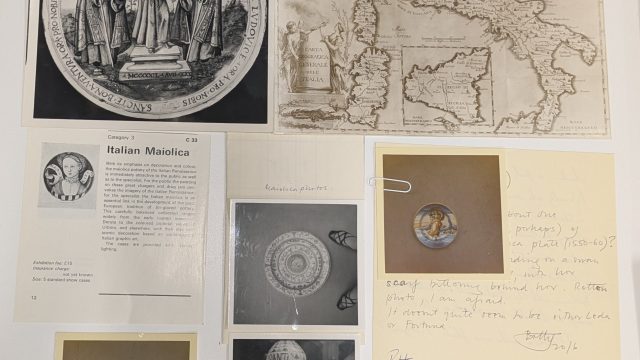On the fifth day of Christmas, my true love sent to me,
Five gold rings,
Four calling birds,
Three French hens,
Two turtle doves,
And a partridge in a pear tree.—“The Twelve Days of Christmas”
In this post I’ll be discussing this 1970s evening dress designed by Yves Saint Laurent which features not five, but eight, gold rings, of sorts.


It is significant that this garment’s rings are gold coloured as opposed to gold or gold plated. This dress was not made for Yves Saint Laurent’s eponymous couture line, but as part of Saint Laurent Rive Gauche, which was founded in 1966 in order to make Saint Laurent’s designs more widely accessible and to boost sales. Various contemporary designers interested in democratising fashion and alert to the rising prices of custom design and the diminishing number of clients willing to pay couture prices were operating along similar lines. Three years earlier Mary Quant had launched her lower-priced diffusion line, Ginger Group. DKNY, Donna Karan New York’s diffusion line established in 1989, provides a more recent example.

Saint Laurent Rive Gauche pieces typically combine stylish cuts with cheaper materials. In this case the rings look gold without containing this expensive chemical element, and the dress itself is made from rayon. Rayon, which is made from regenerated and purified cellulose from plant sources, was the first artificial fibre, although it’s viewed as semi-synthetic because it’s manufactured from naturally occurring polymers. It was developed towards the end of the nineteenth century as a cheaper alternative to silk, and is also known as artificial silk. Initially used for men’s socks and later women’s stockings and underwear, by the 1970s rayon was a commonly-used fibre. Its relative inexpensiveness and ability to resemble silk, as well as other natural fibres such as wool, made it perfect for the Saint Laurent Rive Gauche line, and more specifically this ruched, flowing evening gown, which has commonalities with designs from Saint Laurent’s main line—its elegant neckline, for example.
If you’re interested in making an appointment to view textiles and fashion objects at the Clothworkers’ Centre, please email clothworkers@vam.ac.uk.
This post was edited by the author on 21 December 2020 as part of work on sensitive terminology and topics.


